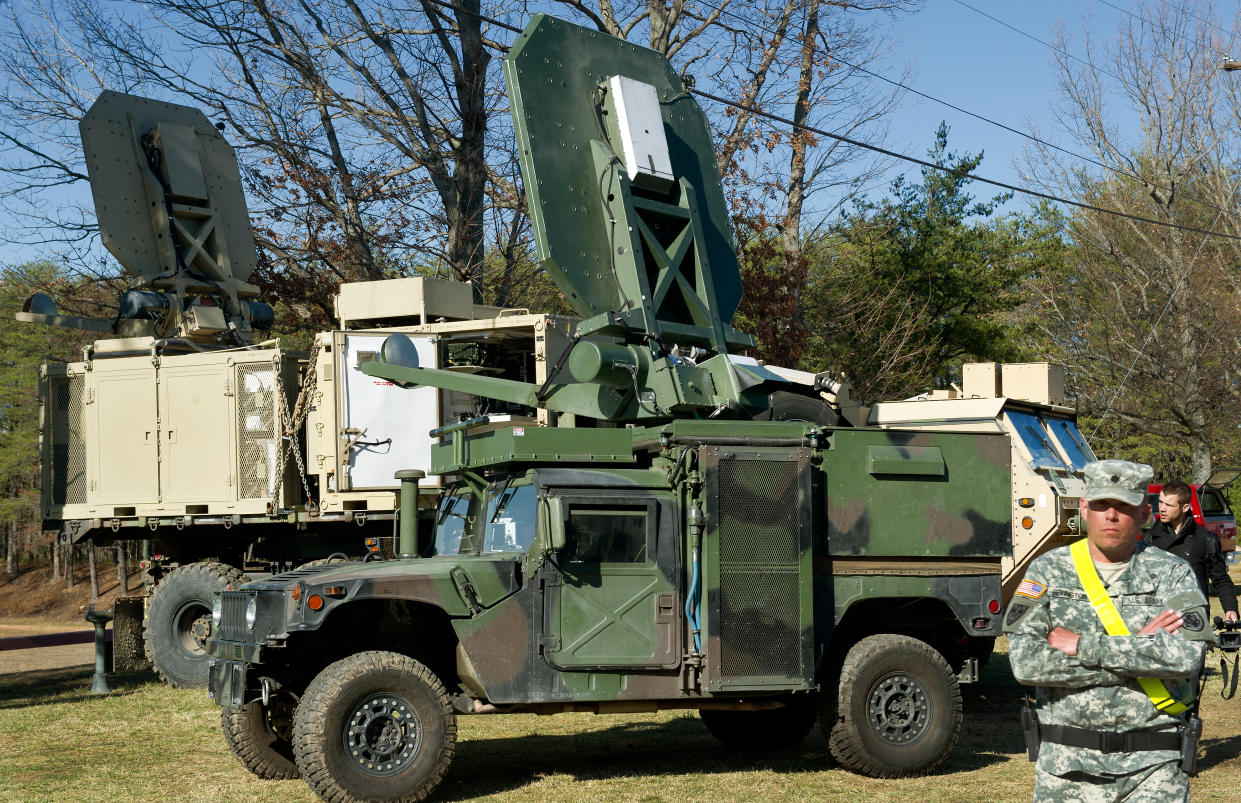The secret, troubled history of the military's 'pain ray' weapon

It’s been nearly 20 years since the Pentagon revealed that it had secretly developed a nonlethal weapon meant to inflict excruciating pain without causing lasting injury. But news that U.S. military police considered using the device to target protesters near the White House has reignited interest in the weapon, often dubbed a “pain ray.”
NPR reported Wednesday that a senior military police officer had asked about the possibility of obtaining nonlethal weapons to use against protesters near the White House in early June — including a sonic weapon that has been used to ward off pirates at sea, and the Active Denial System, which uses microwave energy.
It appears that the request was no more than an informal inquiry, but it underscores the continuing allure of a nonlethal weapon that uses an energy beam rather than projectiles. Yet in the case of the Active Denial System, it also highlights the failure to field the system after nearly two decades, despite the fact that the military spent tens of millions of dollars to develop it.
The Active Denial System is built by Raytheon, the same company that in 1947 produced the first commercial microwave oven, though the company is now better known for building weapons. The nonlethal device works by emitting a microwave beam at 95 gigahertz, a specific frequency that penetrates the outermost layer of skin, creating an intense burning sensation, but not powerful enough (in theory) to cause a burn.
The idea is that the weapon could target a crowd or angry mob, forcing them to disperse or move away. Originally it was intended to be used at checkpoints, to turn back someone threatening U.S. military personnel, or to protect U.S. bases abroad.
Yet the weapon’s development was marred with controversy, and for its first decade the Pentagon struggled to find a mission for the pain ray, which was repeatedly rejected by military commanders in part due to fears of a public backlash against using a microwave weapon on civilians.
Safety also remained a concern, despite assurances from military scientists that it was safe and had been tested extensively on human subjects. Yet in 2007, an airman acting as a test subject was severely burned; a heavily redacted report on that accident indicated technical problems and operator error, but a full version leaked to Wired revealed a series of mistakes, including a lack of proper training.
The accident report came amid a full-scale public relations push by the military to tout the weapon, which it was hoping to finally deploy abroad. The military even invited reporters to Quantico, Va., to be exposed to the pain ray, so they would see that it was safe but effective.
The demonstrations were a mixed bag, however. Reporters saw firsthand that when they were zapped, it indeed hurt and forced them to run away, without causing burns or other visible damage. But those present also saw how difficult it would be to deploy it to a war zone (let alone the streets of Washington, D.C.). The system was huge and complex, taking hours to power up, and would fit only on something the size of a military Humvee. It was also finicky; rain would attenuate the microwave beam, making it ineffective.

More important, perhaps, is that the weapon had never been tested in a real-world setting. The test subjects had been young, healthy military service members. What happens if the weapon hits a child, a pregnant woman or the elderly?
Another challenge was old-fashioned public relations. The 2007 accident happened as the military was preparing to send it to Iraq, which was in the midst of an insurgency. The hope was that a nonlethal weapon could be used at checkpoints to deter suicide attackers, avoiding the risk of shooting civilians.
Yet the U.S. military, which was still reeling from allegations of torture after the Abu Ghraib prison scandal, ultimately decided that a weapon dubbed the “pain ray” wasn’t the best solution in Iraq.
In 2010 the Pentagon went as far as actually sending the weapon to Afghanistan, only to have it returned to the U.S. unused. Again, the military was concerned about the optics of microwaving people.
It’s unlikely that the Active Denial System would ever have been deployed near the White House, or any other site where protesters were demonstrating. Military police would have to be trained how to use it, and it’s unclear if the Pentagon even has an operational weapon available; it’s been years since the military has displayed the system, which was once a star at military conferences and trade shows.
Interviewed back in 2012, Hans Mark, a former Pentagon official who authorized the weapon’s development despite concerns over it, said he didn’t think it made much sense as a nonlethal weapon. But after volunteering to be zapped by the device, and deciding it was unlikely to kill anyone, he allowed it to go forward.
“Almost all of this program has been a waste of money,” he said.
_____
Read more from Yahoo News:


